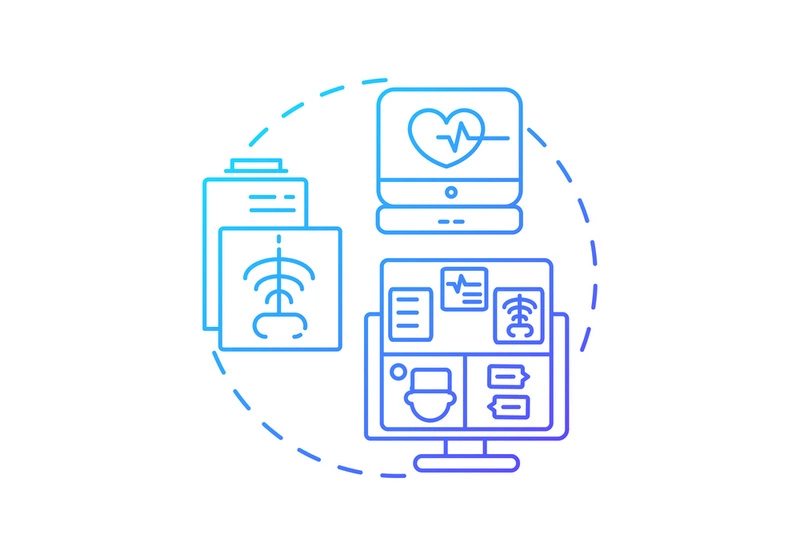Remote Patient Monitoring - RPM - is a technology that enables healthcare providers to monitor...
Remote Patient Monitoring - RPM - is a technology that enables healthcare providers to monitor patients remotely, typically in their home environment. This can be done through a variety of means, including video conferencing, phone calls, text messages and remote sensing. RPM is beneficial because it allows for better management of the elderly, of some chronic conditions and of some post surgical situations. The benefits of remote patient monitoring are that it improves the quality of life for patients by giving them more independence and control over their health care. It also reduces the number of hospital admissions, which saves money for both the hospital and the patient. In this article, we’re going to touch on these and many other remote patient monitoring benefits and how consumers and patients can take advantage of them.
How long has the practice of remote patient monitoring been used?
Remote patient monitoring has been practiced for decades. Remote patient monitoring has been instrumental in enabling the discipline of telemedicine, which is the use of telecommunication to provide health care services to patients who are not physically present at the location of care.
The first remote patient monitoring systems were developed in the early 2000s, and by 2004, remote patient monitoring was already being used by healthcare providers in Africa and Asia.
By 2005 remote patient monitoring was commercially available in North America with about 1000 hospitals using this technology for their patients.
In 2010, about 3% of hospitals worldwide had implemented remote patient monitoring systems and by 2013 that number had grown to 5%.
It’s from these systems and protocols that most of today’s platforms were developed. Nevertheless, the practice predates them and can find its roots in the late 1960s — or to be more precise in 1967.
In 1967 various physicians began to transmit EKGs over telephone wires. This was one of the first instances when something of this nature was put into production. Then, in the 1970s, a program for remote monitoring was developed and enacted. It was a healthcare platform that allowed doctors to oversee medical issues and trends within the Papago Indian Reservation in Arizona. The program was sponsored and spearheaded by the Kaiser Foundation and Lockheed.
At that time remote patient monitoring was only possible in limited settings due to substantial costs and a general lack of enabling technology. However, in recent years this has changed and there are many technologies available today that make it possible for doctors to monitor their patients from their homes.
Remote patient monitoring development and usage.
Remote monitoring devices can track dozens of key indicators — such as skin temperature, ECG, or fall detection. By monitoring patients remotely the technology can help recognize negative trends early and by doing so provide a higher level of care. By tracking vital signs providers can take actions that decrease the threat of hospitalization. The practice gives patients the ability to have continuous healthcare where they are, when they need it, and even at all hours of the day. It can be used to reach patients in rural or remote areas, connect patients directly with a physician or care worker and reduce appointments and work-load for caregivers.

What are the benefits of remote patient monitoring for patients?
Let’s talk about some of the incredible remote patient monitoring benefits - for patients and healthcare providers.
Improves clinical decisions
Powered by AI and using Big Data, RPM can create personal profiles — allowing healthcare physicians better and more complete insight as well as the ability to track changes over time.
Help patients with self-managing symptoms
By monitoring the patient's current condition, the patient gains a cursory understanding of their own vital signs. RPM educates them on their conditions and how to improve them.
Prevents the spread of diseases
Another huge advantage of RPM is that it helps in the prevention of infectious diseases. Patients that don’t need to visit a hospital or clinic are less likely to contract an illness and pass it on. Avoiding in-person visits eradicates the threat of unnecessary exposure to pathogens.
Cost reduction
For providers and patients RPM has demonstrated that it reduces cost by editing out avoidable procedures and reducing unnecessary hospital admissions or readmissions. Also RPM allows for earlier discharge and shorter stays since patients can now be monitored from their homes. It also helps reduce the cost of chronic care therapy.
Boost Revenue
The cost of caring for patients virtually - through Remote Patient Monitoring - is much less than that associated with a brick-and-mortar institution. Adopting RPM can give healthcare providers a leg-up over their competition by providing a higher level of care.
More access to care
By providing a more accessible and lower-cost alternative, remote patient monitoring allows many more people access to care.
Patient engagement
RPM is insightful to patients such that it helps them understand their condition and their unique care plans. The net effect for the patient is a development of more responsibility for their care — which is incredibly empowering and therapeutic to most.
Combats clinical staff shortage
Another benefit of RPM is that it can help reduce staff responsibility and the burden of an over-scheduled infrastructure. It leverages a team model by giving it more flexibility.
Who benefits the most from remote patient monitoring and why?
Remote patient monitoring is a great way to help patients who are unable to come into the office as well as provide a higher level of care through continuous vitals-data monitoring. RPM can be used for monitoring the elderly as well as monitoring acute and chronic conditions. The patients who benefit the most from remote patient monitoring are those who would normally be required to regularly visit their doctor or hospital. Remote monitoring allows these patients to continue their treatment at home without having to travel away from their family or work commitments.